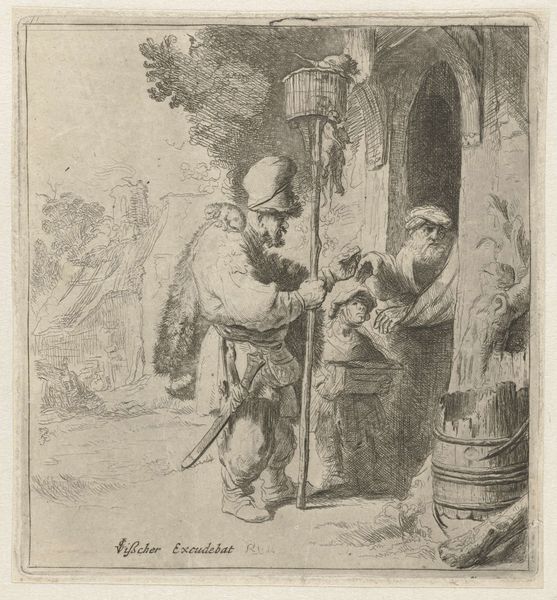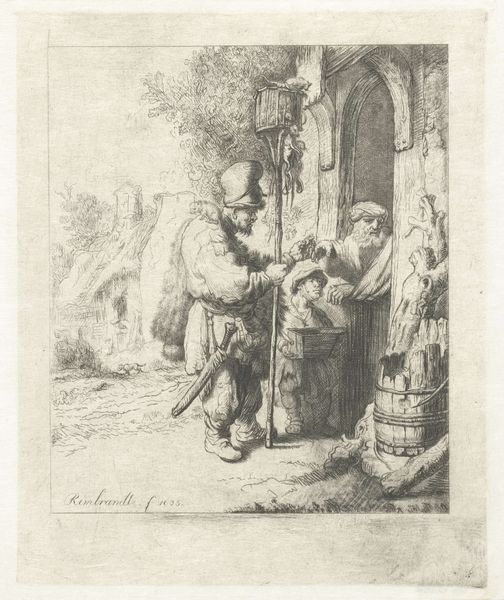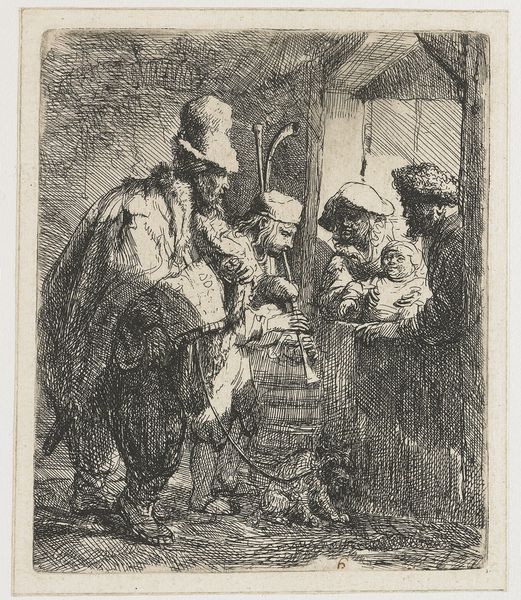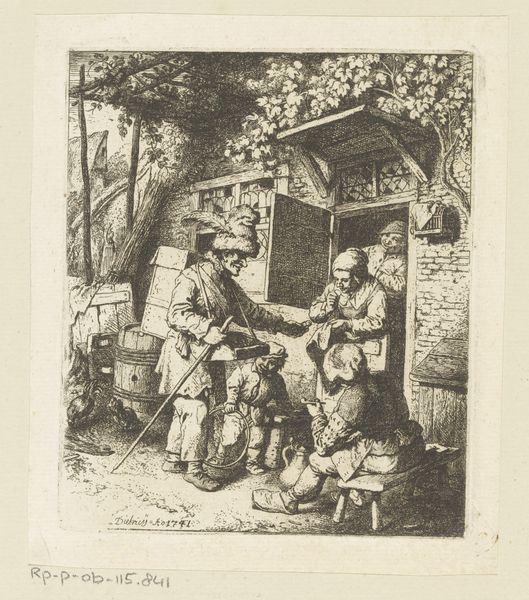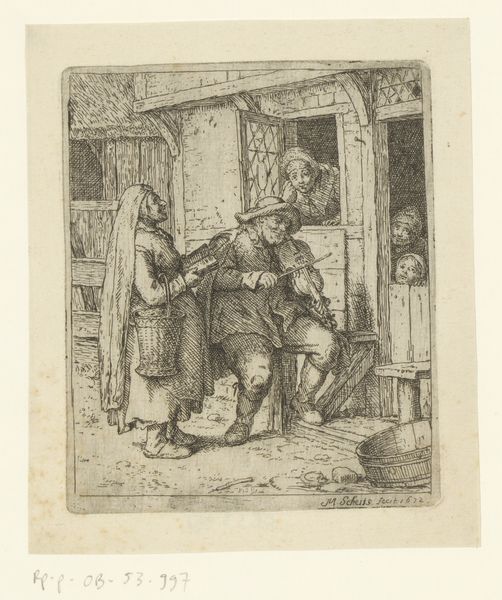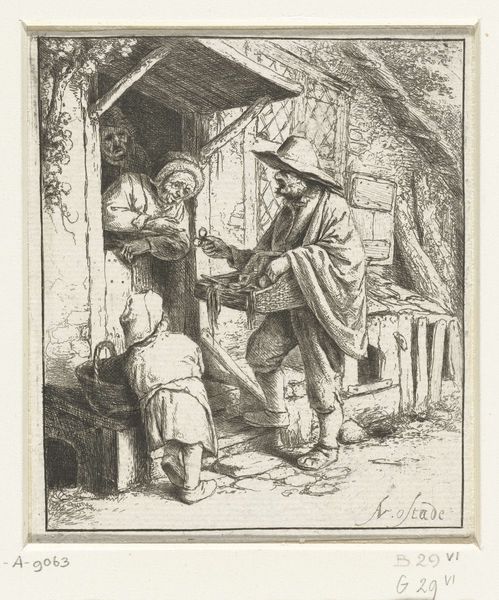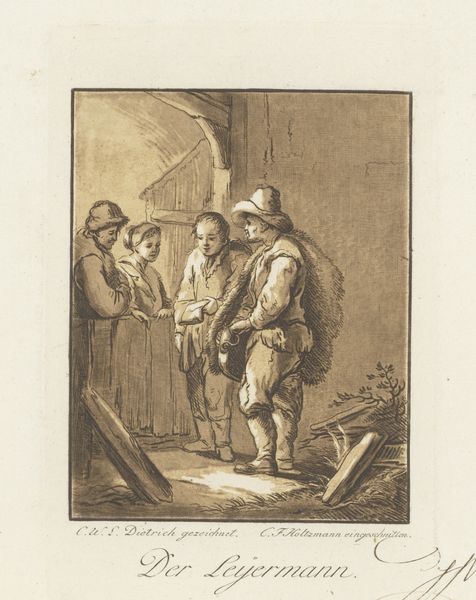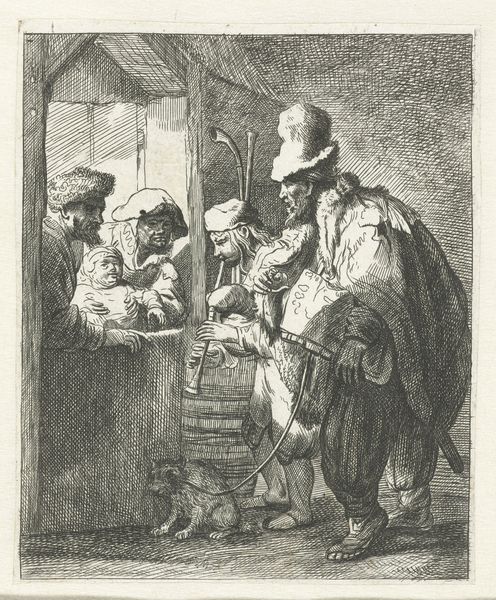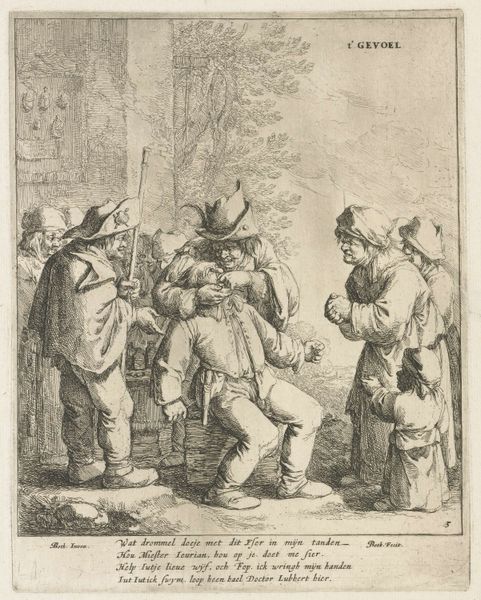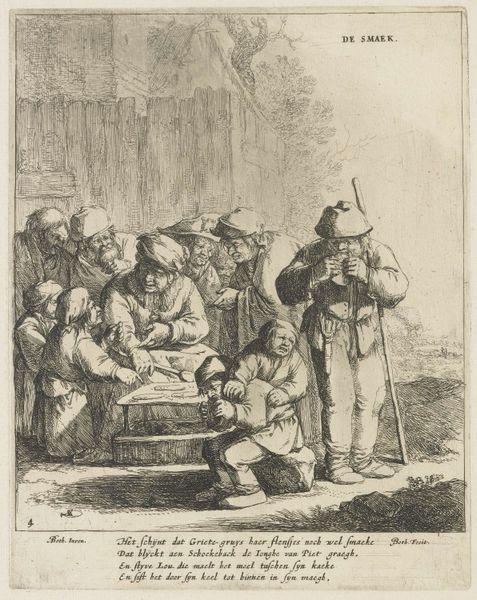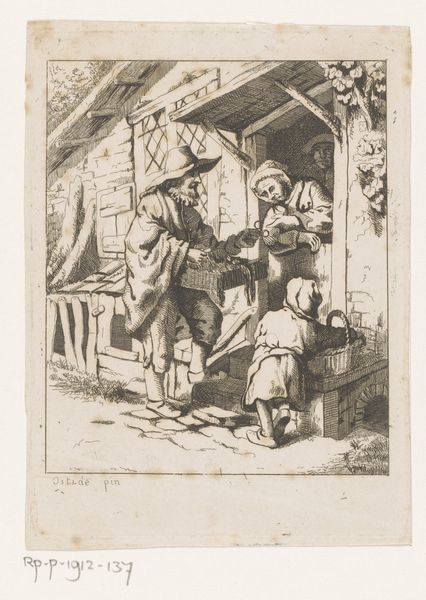
print, etching
#
portrait
#
narrative-art
#
baroque
#
dutch-golden-age
# print
#
etching
#
figuration
#
line
#
genre-painting
Dimensions: 5 1/2 x 4 7/8 in. (14 x 12.4 cm) (plate)
Copyright: Public Domain
Curator: There's a distinctly ominous feeling to this piece. Editor: Indeed. Today we are observing "The Rat-Poison Peddler," an etching created by Rembrandt van Rijn in 1632. The print resides here at the Minneapolis Institute of Art. Curator: Rembrandt’s cross-hatching creates such potent chiaroscuro. Look at how the lines almost vibrate with the anxiety of the scene, making even the surrounding nature appear haunted and watchful. Editor: The etching captures a mundane yet vital transaction in the 17th century. A peddler is offering rat poison to a wary customer emerging from his doorway. It is intriguing to me how this portrays power dynamics between a provider and a consumer, as it reminds me of marginalized communities dependent on health access today. Curator: Precisely. Rat poison becomes almost an alchemical offering. Rodents carry a symbolic weight beyond just disease and nuisance; they represent societal ills, repressed anxieties, or even unseen enemies gnawing away at the foundation. Rembrandt knew how to subtly weave symbolic depth within an ordinary encounter. Editor: The child standing there with the tray emphasizes how survival is intergenerational, even across socioeconomic strata. He isn’t naive or innocent. This economic transaction also forces us to confront hygiene disparities prevalent during the Dutch Golden Age. Cleanliness and class were intertwined, literally marking the vulnerability of poorer communities. Curator: Notice how the cage of dead rats functions as a twisted advertisement, a grotesque trophy displaying the peddler’s success but also hinting at a darker mortality. Editor: Exactly, that detail underscores how entwined humans are with cycles of disease and survival, particularly at that period. This everyday scene, lifted from 17th century Amsterdam, speaks to larger contemporary themes regarding public health, economic vulnerability, and mortality. Curator: Looking at this seemingly simple depiction of 17th century commerce, I see timeless symbolism about facing hidden threats within a community. Editor: Yes, reflecting on how survival continues to intersect with socio-economic realities even today, that image stays resonant and unfortunately evergreen.
Comments
minneapolisinstituteofart almost 2 years ago
⋮
Rembrandt's itinerant tradesman is just as repellent as the vermin that he is paid to kill. He is a picture of fur, from his whiskered chin to his scruffy cloak. The dead rats dangling from his basket advertise the efficacy of his wares and services, but the creatures atop the basket and on his shoulders might make us think twice. At his assistant looks on, holding a box for rat-killing ferrets, the exterminator offers poison to the alarmed resident who fends off the offer.
Join the conversation
Join millions of artists and users on Artera today and experience the ultimate creative platform.


